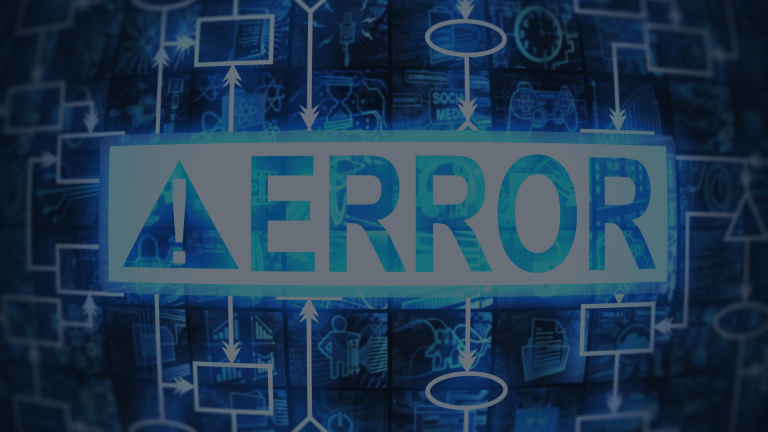Automated Data Extraction & Summarization: A Strategic Implementation Guide
Every business drowns in documents. Contracts pile up in legal departments, invoices flow through accounting, customer feedback arrives through multiple channels, and research reports accumulate faster than anyone can read them. The cost isn’t just in the time spent manually reviewing these documents; it’s in the delayed decisions, missed insights, and bottlenecks that ripple through your operations.
Automated data extraction and summarization using LLM-powered applications addresses this challenge by systematically pulling key information from unstructured documents and converting it into structured, actionable data. But before pursuing this use case, you need to determine whether it aligns with your business priorities and delivers measurable value.
Is This Use Case Right for Your Organization?
Identifying the Right Bottlenecks
This use case makes strategic sense when your organization faces specific, measurable problems:
Document processing delays are creating operational bottlenecks. If your team spends hours each week manually reviewing contracts, processing invoices, or analyzing customer feedback, you have a clear target for improvement. Calculate the current time spent and the cost of those delays; for instance, if contract review adds three days to your sales cycle, what revenue does that represent?
Critical information is trapped in unstructured formats. When important data lives in PDFs, emails, or scanned documents instead of your systems of record, it can’t drive automated workflows or inform real-time decisions. If employees regularly need to hunt through documents for specific clauses, dates, or terms, extraction could deliver immediate value.
Manual processes introduce errors and inconsistency. Human review of repetitive documents inevitably leads to missed details, transcription errors, and inconsistent interpretation. If these errors have business consequences (incorrect billing, compliance oversights, or missed SLA violations) then automation can reduce risk.
Volume is outpacing capacity. Perhaps your business is growing, but hiring additional staff to process documents isn’t economically viable or fast enough. Or seasonal spikes create temporary but significant backlogs.
When This Use Case Doesn’t Fit
Be honest about when this approach won’t deliver value:
- Document volume is genuinely low. If your team processes 20 invoices per month, the implementation effort likely exceeds the value gained.
- Documents require deep domain expertise. While LLMs can extract and summarize impressively, they’re not suitable as the sole decision-maker for nuanced judgment calls like medical diagnoses or complex legal interpretations.
- Your documents lack consistent structure. Completely freeform documents with no recurring patterns are harder to extract from reliably.
- You can’t define clear success criteria. If you can’t articulate what “good” looks like (which fields matter, what accuracy rate is acceptable) implementation will drift without delivering business value.
Measuring the Opportunity
Before proceeding, quantify the business case:
- Time savings: How many hours per week does your team spend on manual extraction or review? What’s the loaded cost of that time?
- Cycle time reduction: How much faster could processes move? What’s the value of that speed (faster invoicing, quicker sales cycles, reduced customer wait times)?
- Error reduction: What do current errors cost in rework, penalties, or lost business?
- Scalability: What does hiring additional staff to handle growth cost versus implementing automation?
A compelling business case shows clear ROI within 12-18 months, accounting for both implementation costs and ongoing operation.
Designing an Effective Pilot
Scope Selection
Choose a pilot scope that’s large enough to prove value but contained enough to manage:
Select a specific document type. Don’t try to extract from contracts, invoices, and customer emails simultaneously. Pick one; ideally the category with the highest volume or clearest business pain. Common starting points include:
- Purchase orders or invoices
- Non-disclosure agreements or standard contracts
- Customer support tickets
- Insurance claims
- Job applications
Define exact extraction requirements. List precisely which fields you need extracted and what “good” looks like for each. For a contract, this might be: party names, effective dates, termination clauses, payment terms, and renewal conditions. For each field, specify the acceptable format and what constitutes an error.
Establish a baseline. Before implementing anything, measure current performance: how long does manual processing take, what’s the current error rate, what bottlenecks exist?
Pilot Structure
A typical pilot runs 6-8 weeks and processes a representative sample of 100-500 documents:
Weeks 1-2: Setup and Testing
- Configure the extraction system with your document types and required fields
- Test with 20-30 sample documents covering different variations
- Establish the human review workflow
- Set up basic tracking for accuracy and processing time
Weeks 3-5: Production Operation
- Process documents through the system in parallel with existing manual processes
- Have subject matter experts review and correct AI outputs
- Track every discrepancy between AI extraction and human review
- Measure time savings and accuracy rates
Weeks 6-8: Analysis and Refinement
- Analyze patterns in errors (which fields, which document variations)
- Refine prompts or add example documents to improve performance
- Calculate actual ROI based on pilot data
- Document lessons learned and requirements for scaling
Success Criteria
Define clear metrics before starting:
- Accuracy threshold: What percentage of fields must be extracted correctly? Industry applications typically target 95-99% depending on the use case.
- Time reduction: What processing time improvement justifies the investment? Aim for at least 50-70% reduction.
- Review time: How much time do human reviewers spend verifying and correcting outputs? This must be substantially less than original manual processing time.
- User acceptance: Will the people who rely on this data trust and use it?
The pilot succeeds when it demonstrates that the system can meet these thresholds consistently across your document variety.
Scaling Beyond the Pilot
Phased Expansion
Don’t rush from pilot to full deployment across all document types. Scale deliberately:
Phase 1: Scale the pilot document type across all volumes, all sources, and all variations. If you piloted with NDAs from enterprise customers, now include NDAs from partners, vendors, and all customer segments. Work out the edge cases and stabilize operations.
Phase 2: Add similar document types that share characteristics with your pilot. If you started with purchase orders, add invoices next. The learning transfers more easily between related documents.
Phase 3: Expand to different document categories with distinct structures and requirements. Each new category requires similar rigor to your original pilot—testing, validation, and refinement.
Integration Requirements
Scaling means connecting extraction to your actual business processes:
Upstream integration: Documents need to flow into the system automatically. This might mean:
- Email monitoring for documents sent to specific addresses
- API connections to document management systems
- Upload portals for users
- Connections to scanning equipment
Downstream integration: Extracted data must flow to where it’s needed:
- CRM systems for customer information
- ERP systems for financial data
- Project management tools for contract terms
- Databases for analysis and reporting
Workflow integration: Build the system into actual business processes:
- Route documents based on content or urgency
- Trigger approvals when certain conditions are met
- Alert relevant teams when specific clauses or terms appear
- Update records automatically when documents are processed
Change Management
Technology is the easier part of scaling. The harder work is organizational:
Redefine roles. People who previously did manual extraction need new responsibilities. Are they becoming the quality reviewers? Moving to exception handling? Taking on higher-value work that was previously backlogged?
Build trust gradually. Don’t eliminate human review immediately. Start with high oversight and gradually reduce it as the system proves reliable. Track and publish accuracy metrics so users can see improving performance.
Train appropriately. Teams need to understand what the system can and cannot do, how to review its outputs effectively, and how to flag issues for improvement.
Compliance and Security Considerations
Data Handling
Documents often contain sensitive information: personal data, financial details, proprietary business terms, health information. Your implementation must address:
Data classification: Categorize documents by sensitivity level. Contracts with pricing might be commercial-sensitive. Employee documents contain personal information. Some documents might include both.
Access controls: Who can upload documents? Who can view extracted data? Who can access raw documents? Implement role-based access that matches your existing data governance policies.
Data residency: If you use cloud-based LLM services, understand where data is processed and stored. Some industries or jurisdictions require that data never leaves specific geographic regions.
Retention and deletion: Define how long documents and extracted data are retained. Implement automated deletion policies that comply with regulations like GDPR or industry-specific requirements.
Regulatory Compliance
Different industries face different requirements:
Financial services must consider regulations around customer data, transaction records, and audit trails. Every extraction might need to be explainable and auditable.
Healthcare organizations face HIPAA requirements if documents contain protected health information. You may need Business Associate Agreements with any third-party providers.
Legal departments must maintain attorney-client privilege and ensure document handling meets e-discovery requirements.
General business should consider GDPR, CCPA, or other privacy regulations if documents contain personal information about customers or employees.
Risk Mitigation
Implement safeguards appropriate to your risk tolerance:
Human review for high-stakes decisions. Never let AI extraction automatically trigger irreversible actions (like payments or contract commitments) without human verification, at least initially.
Confidence scoring. Most LLM systems can indicate uncertainty. Route low-confidence extractions to human review automatically.
Audit trails. Log every document processed, every extraction made, every change to extracted data, and every person who reviewed or modified results.
Error handling. Build clear processes for what happens when extraction fails or produces obviously incorrect results. Documents shouldn’t disappear into a black box.
Monitoring, Observability, and Continuous Improvement
Real-Time Monitoring
Implement tracking from day one of production operation:
Processing metrics:
- Documents processed per hour/day
- Average processing time per document
- Queue depth and wait times
- System availability and uptime
Quality metrics:
- Extraction accuracy by field and document type
- Confidence score distribution
- Rate of human corrections needed
- Types of errors encountered
Business metrics:
- Time from document receipt to data availability
- Reduction in processing backlog
- Cost per document processed
- Downstream impact (faster invoicing, reduced cycle times)
Dashboards for Different Audiences
Different stakeholders need different views:
Operations teams need real-time dashboards showing current queue status, processing rates, and immediate issues requiring attention.
Quality teams need accuracy trends, error patterns, and flags when performance degrades below thresholds.
Business leaders need summary metrics showing business impact—cycle time improvements, cost savings, throughput increases, and ROI tracking.
Compliance teams need audit reports showing adherence to data handling policies, access logs, and regulatory compliance status.
Continuous Improvement Process
Set up a regular cadence for improvement:
Weekly reviews of operational metrics catch immediate issues: sudden accuracy drops, processing bottlenecks, or new error patterns.
Monthly analysis identifies trends and opportunities for refinement. Are certain document variations consistently problematic? Are specific fields less accurate than others? Where is human review time still high?
Quarterly reassessment examines whether the system still meets business needs as volumes change, new document types emerge, or business processes evolve.
Feedback loops: Create structured ways for users to report issues, suggest improvements, and confirm when extractions are incorrect. This feedback trains your intuition about system performance and guides refinement priorities.
Adaptation and Evolution
Your documents will change over time. Vendors update invoice formats. Contracts evolve with new standard clauses. Customer feedback arrives through new channels. Build processes to:
- Detect when new document variations appear
- Test system performance on new formats
- Update extraction logic or examples as needed
- Retrain or adjust when accuracy degrades
Connecting to Your AI Strategy
This use case shouldn’t exist in isolation. It fits within your broader AI strategy when:
It addresses a documented business priority. Perhaps operational efficiency is a strategic pillar, and document processing bottlenecks directly impact that goal. Or customer responsiveness is strategic, and faster document processing enables quicker service delivery.
It builds organizational capability. Your first extraction use case teaches your organization how to implement, validate, and operate LLM-powered applications. These lessons transfer to future use cases: the evaluation frameworks, the validation approaches, the monitoring practices, and the organizational change management.
It creates data infrastructure. Extracted data becomes a new asset. Once contract terms live in structured databases, you can analyze them for patterns, manage obligations proactively, and surface insights that weren’t accessible when information was trapped in documents.
It enables downstream automation. Extraction is often the first step in a longer automation chain. Once data is structured, you can build workflows, automate approvals, trigger notifications, or feed analytics, capabilities that deliver compounding value.
It informs your broader AI roadmap. Success or challenges with this use case teach you about your organization’s readiness, your data quality, your users’ adaptability, and your technical capabilities. These lessons shape which use cases you pursue next and how you approach them.
Conclusion
Automated data extraction and summarization delivers clear value when it targets genuine business bottlenecks, but only when implemented with appropriate rigor. The technology is increasingly capable, but success depends on careful scoping, thorough validation, deliberate scaling, and continuous monitoring.
Before pursuing this use case, confirm it addresses a documented business priority, not just a desire to “use AI.” Define specific metrics for success. Run a proper pilot that proves both technical capability and business value. Build compliance and security practices appropriate to your industry and risk tolerance. Create monitoring and improvement processes that ensure the system continues delivering value as your business evolves.
Most importantly, view this use case as part of your broader AI strategy, not a standalone project. The organizational capabilities you build, the lessons you learn, and the infrastructure you create should compound toward your strategic objectives. Done well, automated extraction becomes not just a efficiency improvement but a foundation for increasingly sophisticated AI-powered operations.







